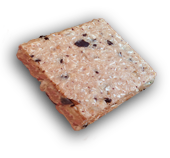 Running. Seems simple doesn’t it? Its natural and we innately know how to run don’t we? Not so fast. One of the biggest misconceptions these days is that running is natural and that we all know how to do it. The truth is that we actually need to be taught how to run or should I say reminded how to run. Our bodies are perfectly designed to run and yet many runners are constantly in pain. Why?
Running. Seems simple doesn’t it? Its natural and we innately know how to run don’t we? Not so fast. One of the biggest misconceptions these days is that running is natural and that we all know how to do it. The truth is that we actually need to be taught how to run or should I say reminded how to run. Our bodies are perfectly designed to run and yet many runners are constantly in pain. Why?
The creation of modern running shoe is one of the single worst contributors to the erosion of correct and natural running. The result is a world wide epidemic of runners with chronic pain. How did this happen you ask? Well, as the modern running shoe became more and more advanced, with special arch supports and big cushy heels, we began to change the way we run. Watch most people run these days and you notice the phenomenon called heel strike running, that is the heel is the fist part of the body to contact the ground. This is a totally unnatural way to run and is majorly destructive to the human body. Let me illustrate this point with an easy demonstration: Take your shoes of and run a few steps with the heel strike technique that you mostly likely are unaware that you use daily. Doesn’t feel very good does it? In fact, heel strike running is only possible while wearing a cushiony running shoe as biomechanically; our body is not designed to hit the ground that way. There is way too much force imparted to the joints and the force causes damage to bones, tendons, ligaments and muscles causing injuries. Our feet are perfectly designed to impact the ground in a forefoot/midfoot strike and to allow the forces to be dissipated through the natural movement of the foot. This type of foot strike is also way more efficient. Physics show that with a heel strike, we impart braking forces to the ground slowing ourselves down. A midfoot/forefoot strike however creates much less braking forces making it easier to maintain pace.
Now while I’m saying that the modern running shoe has played a major role in destroying the way we run, I am not advocating that everyone toss out their running shoes and begin running barefoot. That would create other problems. Instead I’m suggesting that learning how to run correctly is necessary. It is easier to learn correct running mechanics barefoot, but I wouldn’t advocate running any kind of distance barefoot. There is still much debate about the benefits/risks of barefoot running, Christopher McDougall’s book “Born to Run” http://www.chrismcdougall.com/barefoot.html, provides a unique insight into barefoot running.
 The key to correct running is more than purely correcting heel-strike issues. Watch any wild animal run, you will see that they trike the ground with the foot in dorsiflexion and moving backwards, this allows them to both impart maximum force to the ground while at the same time, minimizing breaking forces and impact. Correct posture is also vital, many people run with too much of a forward lean, essentially they are “running while falling over” and using their legs to catch themselves each stride, causing massive fatigue and strain on the joints. A much more natural and balanced posture should be adopted, which will allow the leg to get out in front of the center of gravity and then strike the ground moving backwards. The arm action is another technique that many people get wrong. They over bend the arms and tuck up the shoulders (think T-Rex) and cause unnecessary tension in the neck and trapezius muscles. The arms should be more relaxed and allowed to move naturally with the legs.
The key to correct running is more than purely correcting heel-strike issues. Watch any wild animal run, you will see that they trike the ground with the foot in dorsiflexion and moving backwards, this allows them to both impart maximum force to the ground while at the same time, minimizing breaking forces and impact. Correct posture is also vital, many people run with too much of a forward lean, essentially they are “running while falling over” and using their legs to catch themselves each stride, causing massive fatigue and strain on the joints. A much more natural and balanced posture should be adopted, which will allow the leg to get out in front of the center of gravity and then strike the ground moving backwards. The arm action is another technique that many people get wrong. They over bend the arms and tuck up the shoulders (think T-Rex) and cause unnecessary tension in the neck and trapezius muscles. The arms should be more relaxed and allowed to move naturally with the legs.
I suggest finding a nice grassy field, take off your shoes and go for a run, consciously work on posture, lifting you knee and striking the ground with the fore/mid-foot and while the leg is moving backwards. Allow the arms to swing naturally to counterbalance the legs. I guarantee that you will find this type of running much more comfortable. Gradually try to apply these techniques to you road running while wearing shoes. You will find that it’s easier to keep up a good pace and your body will feel less beat up at the end of a run.






